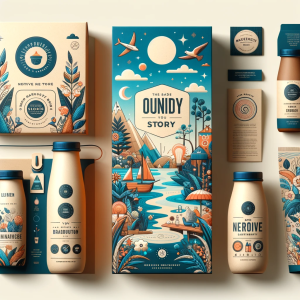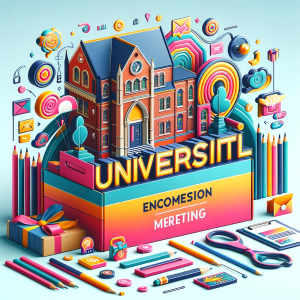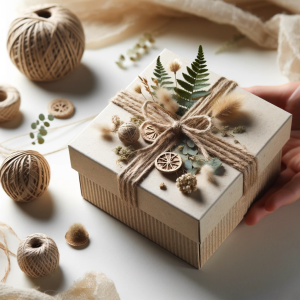Introduction
Wine, with its rich history, is not just about the taste and the aroma; it’s also about the experience. The way a wine bottle is packaged plays an integral role in that experience. From handcrafted wooden boxes of the past to today’s sleek and modern designs, wine packaging has seen a fascinating evolution. Yet, as the world leans more towards eco-conscious choices, the wine industry too finds itself at the cusp of a sustainable revolution. At Sam’s Packaging, we’ve been privileged to witness this dynamic shift in the wine industry. We always appreciate the delicate dance between honoring tradition and embracing innovation.
1. Unveiling the Wine: The Art of Paper Packaging
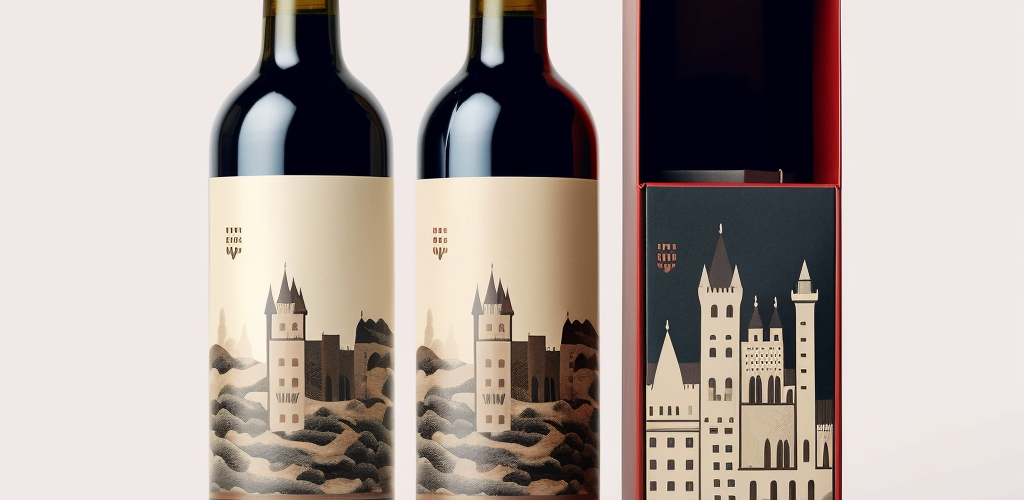
In the realm of wines, the adage “don’t judge a book by its cover” doesn’t quite apply. Indeed, the packaging is often the book cover. It offers consumers the first glimpse into the story and quality of the wine inside. It’s a teaser, a visual appetizer before the main course that is the wine itself.
Traditional Design Considerations
Historically, wines have often been presented in wooden crates or boxes. They are adorned with intricate designs and labels that evoke a sense of age and prestige. This style of packaging connects wine enthusiasts with lineage of winemaking, making every bottle feel like a piece of history.
Modern Design Aesthetics
The contemporary wine market sees a fusion of tradition with modernity. Sleek, minimalist designs are becoming popular, often influenced by modern art and typography. Yet, amidst this shift, the prominence of paper packaging remains unchanged. Elegant paper wraps, labels, and boxes not only protect the wine bottle. But also serve as a canvas to convey the brand’s essence.
With the perfect blend of design, texture, and print, paper packaging creates an unboxing experience that resonates with the wine’s aura, making every sip feel even more special.
2. Paper Choices: From Craft to Luxury
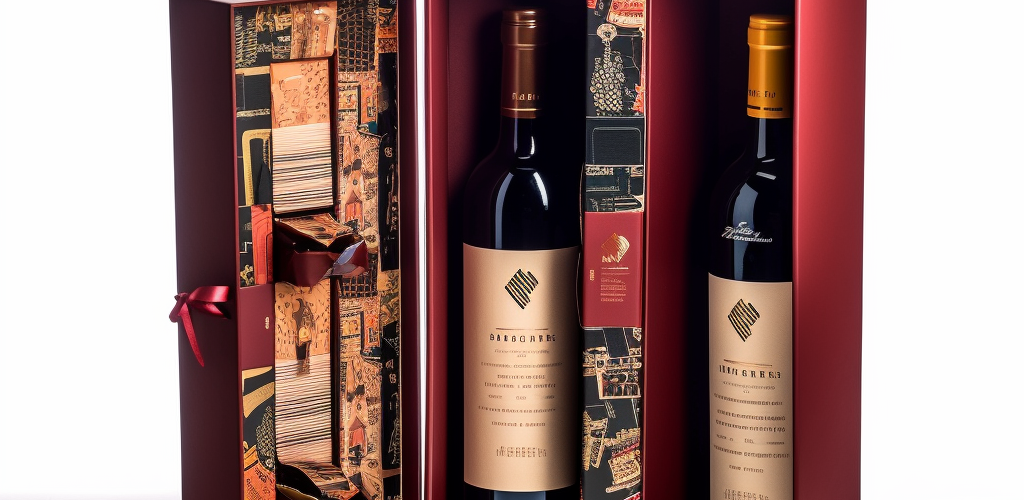
Just as wine varies in notes, aroma, and character, paper choices for packaging come with their own set of nuances. Selecting the right paper isn’t just about aesthetics; it’s about resonating with the wine’s spirit and the brand’s philosophy.
Craft Paper
A popular choice for many eco-conscious brands, craft paper has a rustic, organic feel to it. Its natural brown hue and textured finish evoke a sense of earthiness, making it a fitting choice for organic or artisanal wines. Craft paper embodies simplicity and sustainability, setting the tone for wines that boast natural processing and authenticity.
Luxury Linens and Textured Papers
For those premium wines targeting the higher end of the market, nothing says luxury like linen-finished or heavily textured papers. They add a tactile dimension to the unboxing experience, with every touch amplifying the wine’s exclusivity.
Weights and Finishes
The weight of the paper adds to the overall feel of the product. Heavier weights often indicate premium quality and are typically reserved for luxury brands. Finishes, on the other hand, can range from matte to glossy, which can be eye-catching and bold.
The curve of a wine bottle, with its slender neck and broad base, requires a paper that wraps seamlessly around it, enhancing its silhouette. Whether it’s embossed detailing, gold foiling, or UV spot finishes, the possibilities are limitless when you’re looking to make a statement.
A Curated Experience with Sam's packaging
Understanding the symbiotic relationship between wine and its packaging, we at have curated a diverse selection of sustainable papers. From the raw appeal of craft to the opulence of luxury linens, our collection is designed to help vintners find that perfect match. It also turns their packaging vision into a tangible reality.
3. Design Elements: Embellishing the Wine Story
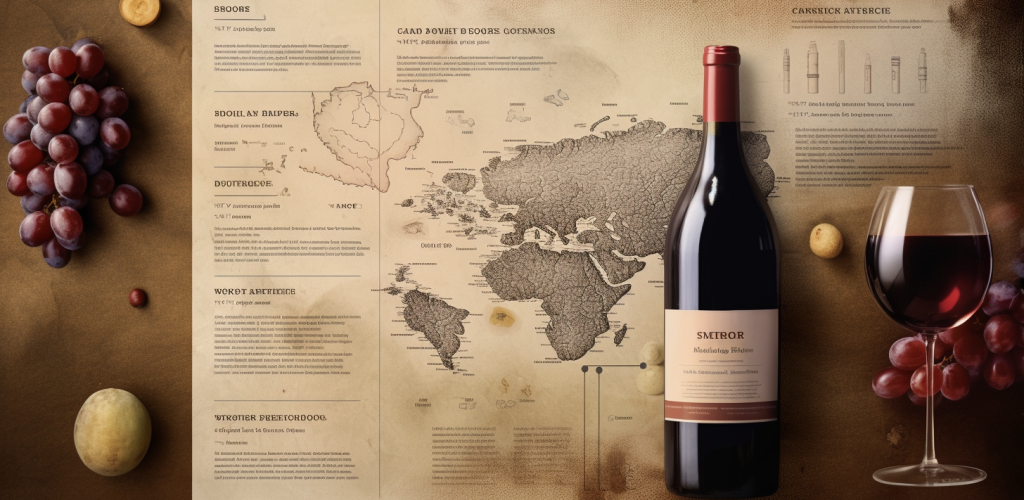
The magic of wine lies not only in its taste but in the stories it tells — of its origins, its makers, and its journey from vine to glass. Packaging, especially its design elements, becomes the prologue to this tale, inviting consumers to delve deeper.
The Tactile Artistry
Embossing: Elevating elements of the design, embossing gives a three-dimensional feel to the package. Whether it’s the crest of a vineyard or the intricate patterns inspired by wine’s journey, embossing brings depth, making the design elements pop. When combined with sustainable materials, this method imparts an organic touch, marrying modern design with natural aesthetics.
Stamping: Often paired with embossing, stamping, especially with metallic foils, injects a touch of luxury. Gold or silver stamping on eco-friendly papers can create a striking contrast, blending opulence with sustainability. The shimmer of metallics against a matte or textured paper captures attention, hinting at the exquisite experience awaiting inside the bottle.
Metallic Foils: The gleam of metallic foils, whether it’s gold, silver, or even rose gold, exudes luxury. It’s not just about the shine but the light play on the bottle’s curves, enhancing the allure. When chosen wisely, foils can be sourced sustainably, ensuring that while the packaging shines bright, it doesn’t leave a lasting mark on the environment.
Sustainable Elevation
With the wine industry leaning towards sustainability, there’s an innovative surge in design elements that don’t compromise the environment. Recycled foils, vegetable-based inks, and biodegradable embellishments are becoming the norm. These materials, while eco-friendly, also amplify design aesthetics, adding depth, character, and authenticity to the wine’s narrative.
Crafting the Narrative with Sam's Packaging
At Sam’s Packaging, we believe that every wine has a unique story, and its packaging should reflect that tale. Leveraging sustainable design elements, we assist brands in crafting an unforgettable first impression, ensuring the wine story is as captivating outside as it is on the inside.
4. Sustainable Labeling: More than Just a Sticker
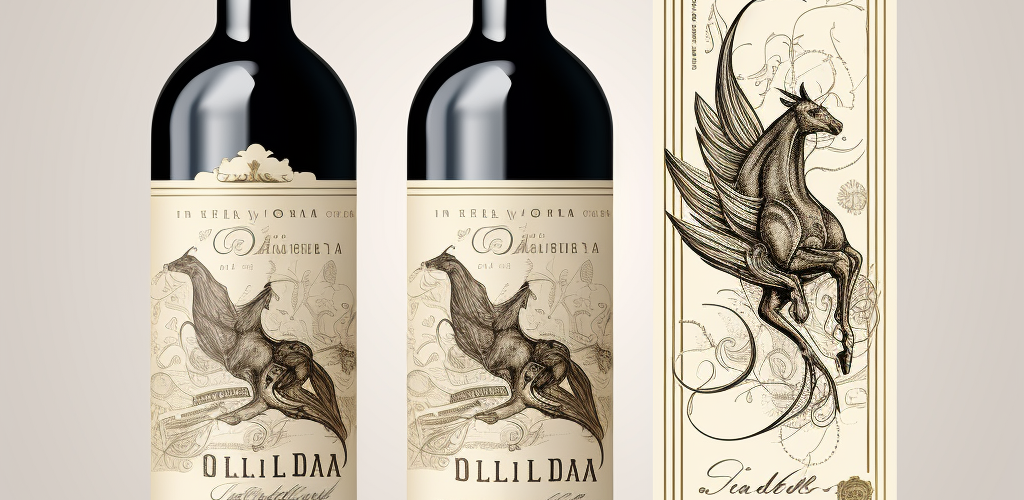
A wine label is more than just a piece of paper adhered to a bottle. It’s an introduction to the vintage within, a summary of its character, and an expression of the vintner’s dedication. As consumers become increasingly eco-conscious, the focus isn’t just on what’s inside the bottle but also on the sustainability of its external presentation.
The Essence Captured
Telling the Wine’s Story: From the vineyard’s heritage to the grapes’ journey, the label conveys intricate details in limited space. The fonts, colors, and graphics come together, creating a snapshot of what one can expect from the wine.
Interactive Labels: Some brands are now incorporating QR codes or augmented reality features. When scanned with a smartphone, these labels can provide additional information, videos, or interactive experiences about the wine’s origin, tasting notes, and even food pairings.
Innovative Materials and Inks:
-
Eco-friendly Papers: Choosing sustainable paper for labels, such as recycled or FSC-certified paper, ensures reduced environmental impact. These papers, contrary to some beliefs, can be just as refined and premium in feel as their less-sustainable counterparts.
-
Vegetable-based Inks: Traditional inks can be harmful to the environment due to the chemicals used in their production. Vegetable-based inks, however, are derived from renewable sources and are biodegradable. They offer vibrant color quality, ensuring that sustainability doesn’t come at the expense of aesthetics.
-
Water-based Adhesives: The glue that holds the label to the bottle also plays a part in sustainability. Water-based adhesives are less harmful to the environment and are easier to remove during the recycling process, ensuring that the bottles can be reused or recycled effectively.
5. Gift Boxes and Carriers: A Sustainable Showcase
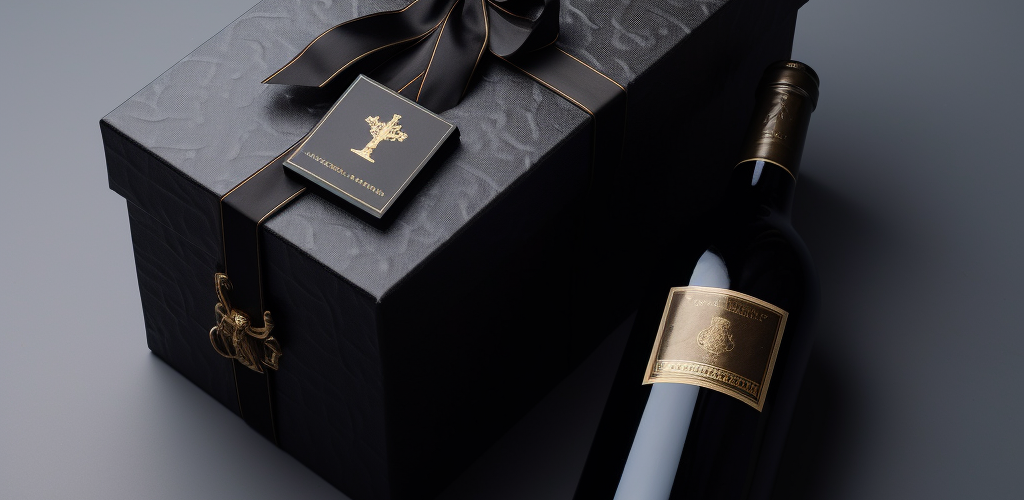
Gifting wine is a time-honored tradition, representing more than just the bottle’s contents. It’s about sharing a moment, an experience, and a sentiment. With gift boxes and carriers, this sentiment is further enhanced, providing an unforgettable unboxing experience even before the cork is popped.
Elevating the Gifting Experience
A Visual Feast: The right packaging accentuates the wine’s stature, making it even more special. Whether it’s a subtle matte finish, an intricate pattern, or a bold graphic, the exterior of a wine gift box can convey as much emotion as the wine inside.
Tactile Surprises: From textured surfaces that invite touch to little details like magnetic closures or satin ribbons, these tactile elements elevate the anticipation and excitement of unveiling the wine.
Sustainable Elegance
Recycled and Biodegradable Materials: Beyond traditional cardboard, there’s a surge in the use of recycled materials or biodegradable alternatives that lessen the environmental impact without compromising the luxury feel.
Minimalist Designs: Embracing a less-is-more approach, many brands are opting for minimalist designs. By using less material and focusing on core aesthetics, these designs often resonate more with eco-conscious consumers.
Dual-purpose Packaging: Sustainability is also about longevity. Some carriers are designed to serve dual purposes, transitioning from a gift box to a storage container or a decorative piece, reducing waste and offering continued value.
6. Reimagining Wine Catalogs and Inserts
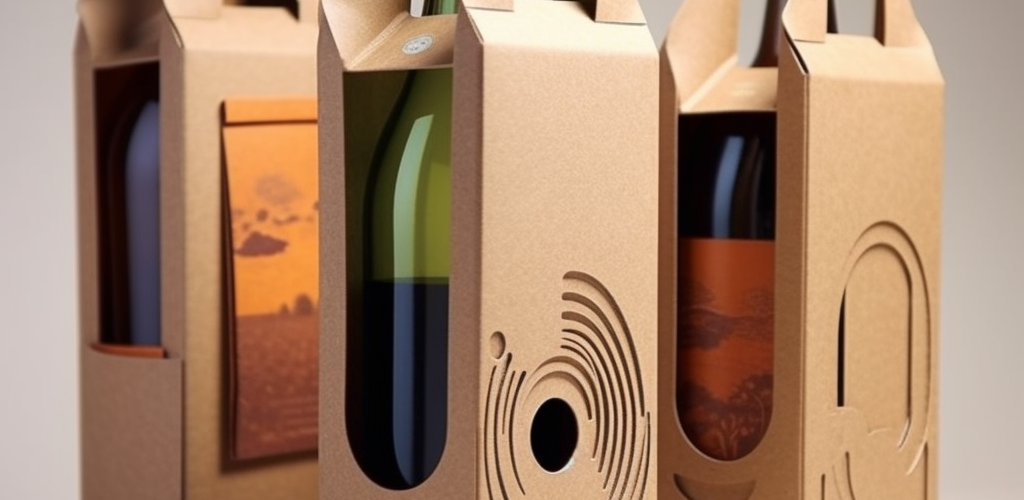
For wine aficionados and casual drinkers alike, the story behind the bottle often enhances the tasting experience. It’s not just about the wine; it’s about the vineyard’s history, the winemaker’s vision, and the journey from grape to glass. This is where wine catalogs and inserts play a pivotal role, acting as silent storytellers that enrich the wine-drinking occasion.
Narrating the Wine's Journey
Tales of Terroir: Whether it’s a family-owned vineyard passed down through generations or a modern winery with innovative techniques, every bottle has a story. Inserts and catalogs are an opportunity to share tales of the land, the climate, and the unique attributes that make each wine special.
The Winemaker’s Touch: Personal notes from the winemaker, insights into the selection of grape varieties, or anecdotes from the harvest season can give readers a closer connection to the wine they’re about to enjoy.
Sustainable Choices for Storytelling
Eco-Friendly Paper: Choosing recycled or sustainably sourced paper for inserts and catalogs ensures the vineyard’s commitment to the environment extends beyond just the bottle.
Sustainable Inks: Soy-based or other eco-friendly inks provide vibrant print quality without the environmental footprint of traditional petroleum-based inks.
Digital Alternatives: While physical inserts have their charm, offering QR codes linking to digital stories or catalogs can be a sustainable alternative, reducing paper use and catering to a tech-savvy audience.
Enhancing the Wine Experience with sam's packaging
While the wine industry marries tradition with innovation, at Sam’s Packaging, we understand the importance of sustainable storytelling. By providing sustainable printing solutions and a range of eco-friendly paper choices, we help vineyards and wineries narrate their stories in a manner that respects both the environment and the rich legacy of wine-making.
7. Wineries Embracing Sustainable Packaging
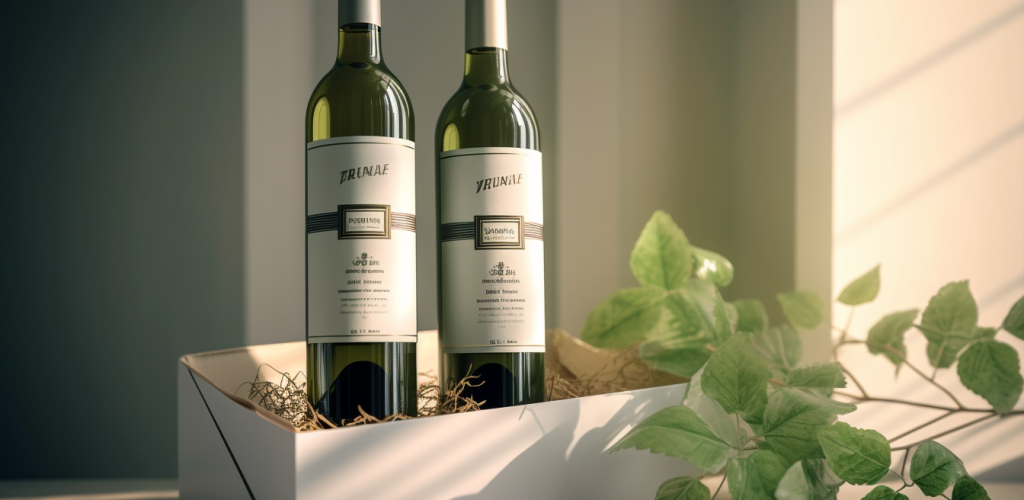
In recent years, there has been a marked shift in the wine industry towards sustainable practices, not just in viticulture but also in packaging. Leading wineries around the globe are redefining their packaging standards, understanding that what surrounds the bottle is just as essential as what’s inside.
Pioneering Vintners in the Green Movement
Wineries in regions like Bordeaux, Napa Valley, and Barossa have been making headlines with their innovative sustainable packaging efforts. From using recycled paper materials to eliminating plastic from their packaging entirely, these vineyards are at the forefront of this eco-friendly transition.
Benefits Beyond the Environment
Elevated Brand Perception: Adopting sustainable packaging often elevates a brand in the eyes of consumers. It resonates with the eco-conscious, aligning the brand’s values with those of its customers.
Market Differentiation: In an increasingly competitive market, having sustainable packaging can differentiate one brand from another, offering a unique selling point that appeals to a growing segment of consumers.
Data Point
A recent survey showed that over 65% of consumers viewed wineries using sustainable packaging more favorably and were more likely to make a purchase based on the eco-friendly presentation alone.
The Ripple Effect
Embracing sustainable packaging not only sets a precedent but also inspires others in the industry to follow suit. As more wineries adopt these practices, the industry as a whole moves closer to a greener future.
8. The Path Forward: Challenges and Triumphs
The journey to embracing sustainable wine packaging isn’t without its hurdles. However, the industry’s collective endeavor has led to innovative solutions that not only address these concerns but often enhance the overall packaging experience.
Navigating the Challenges
Durability: One of the foremost concerns when considering sustainable paper packaging for wine is its durability. After all, packaging must protect the precious contents inside from damage during transportation and storage.
Moisture Resistance: Given that wine is often stored in humid environments, such as cellars, the moisture resistance of sustainable paper packaging becomes paramount. Traditional materials might have seemed superior in this regard, but recent advances in sustainable packaging technology have leveled the playing field.
Aesthetics: There’s a misconception that eco-friendly packaging can’t match the luxurious feel of traditional packaging. However, with innovative designs and the right choice of materials, sustainable packaging can be equally, if not more, opulent.
Triumphs of the Industry
Wineries and packaging providers have collaborated to devise creative solutions to these challenges. From using wax-coated recycled paper for moisture resistance to creating multi-layered designs that add both protection and aesthetic appeal, the industry has turned potential limitations into design opportunities.
Conclusion
As we raise our glasses to the future, it’s not just the fine wine that captures our admiration but the thoughtfulness that encases it. A future where every swirl, sip, and savor is accompanied by the knowledge that the bottle in our hand is a testament to both luxury and sustainability. This isn’t just a distant dream; it’s a burgeoning reality, and the wine industry is poised to be a leading light in this eco-responsible journey.
At Sam’s Packaging, we believe in this vision fervently. Our passion for sustainable wine packaging is only matched by our respect for the age-old traditions of winemaking. As we move forward, we invite brands to join us, to weave together the tales of legacy with the threads of responsibility.
For vintners aiming to align their legacy with the future, the choice is clear. Dive into the world of sustainable wine paper packaging with Sam’s Packaging. Experience a blend of quality, elegance, and eco-friendliness that not only elevates your brand but also pays homage to our planet. Let’s craft the future of wine packaging, one bottle at a time. Contact us today.


